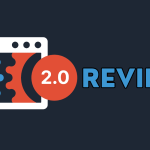Introduction.
Integrating ClickFunnels with Shopify can be a game-changer for your e-commerce business. ClickFunnels, a powerful sales funnel builder, and Shopify, one of the leading e-commerce platforms, can work seamlessly together to streamline your sales process, enhance customer experience, and boost conversions.
By combining the marketing and funnel-building capabilities of ClickFunnels with the robust e-commerce features of Shopify, you can create a powerful sales ecosystem that maximizes your revenue potential.
In this guide, we will walk you through the process of integrating ClickFunnels with Shopify, enabling you to leverage the strengths of both platforms and take your online business to new heights.
Whether you’re new to ClickFunnels or Shopify, or an experienced user of both, this tutorial will equip you with the knowledge and steps to successfully integrate these two powerful tools.
So, let’s get started and explore how to integrate ClickFunnels with Shopify!
What Is Clickfunnels?
ClickFunnels is a popular software platform designed to help businesses and entrepreneurs build effective sales funnels and marketing campaigns online.
A sales funnel refers to the process a potential customer goes through from their initial contact with a business to the point of making a purchase.
ClickFunnels provides a drag-and-drop editor that allows users to build sales funnels without the need for coding or technical expertise.
The platform offers a wide range of pre-designed templates and customizable elements, such as landing pages, sales pages, opt-in forms, order forms, upsell and down-sell pages, and more.
Users can select and arrange these elements to create a funnel tailored to their specific marketing goals and products.
What are The Benefits Of Using ClickFunnels For Your Business?
ClickFunnels offers a wide range of benefits that can help businesses build effective sales funnels and drive conversions.
In this section, we will explore some of the key advantages of using ClickFunnels and how it can propel your business to new heights.
1. Streamlined Funnel Creation.
One of the primary benefits of ClickFunnels is its intuitive and user-friendly interface, allowing entrepreneurs and marketers to build sales funnels without any coding or technical expertise.
With its drag-and-drop editor, you can easily create and customize landing pages, sales pages, order forms, and other essential funnel components.
This simplicity empowers businesses to quickly launch their marketing campaigns and make necessary adjustments on the go, reducing the time and effort required to get their products or services in front of potential customers.
2. Pre-Designed Templates and Customization.
ClickFunnels offers a diverse collection of professionally designed templates for various industries and business models.
These templates serve as a starting point, saving you valuable time and effort in designing your funnels from scratch.
Moreover, each template is fully customizable, allowing you to tailor the look and feel of your funnels to match your brand identity and marketing objectives.
This flexibility ensures that your funnels are not only visually appealing but also aligned with your overall marketing strategy.
3. All-in-One Solution.
ClickFunnels serves as an all-in-one marketing solution, consolidating multiple tools and functionalities into a single platform. This eliminates the need to invest in and manage various software and services separately.
From lead generation and email marketing to payment processing and affiliate management, ClickFunnels provides a comprehensive suite of features to support your entire sales process.
This seamless integration saves you time, resources, and the hassle of dealing with multiple platforms, enabling you to focus on what matters most: growing your business.
4. Automation and Follow-Up.
Efficient automation is a key driver of success in online marketing. ClickFunnels allows you to automate crucial steps in your sales process, such as capturing leads, sending follow-up emails, and delivering targeted offers.
With the platform’s robust automation capabilities, you can nurture leads, build relationships, and guide potential customers through the buying journey without manual intervention.
This automation not only saves time but also ensures consistency in your marketing efforts, leading to higher conversion rates and increased revenue.
5. Conversion Optimization.
ClickFunnels provides a range of tools and features specifically designed to optimize conversions. You can perform A/B split testing to identify the most effective elements of your funnels and make data-driven improvements.
The platform also offers scarcity timers, exit pop-ups, and other psychological triggers to create a sense of urgency and encourage visitors to take action.
With ClickFunnels’ built-in analytics and tracking, you can monitor key metrics and make informed decisions to continuously refine and enhance your funnels for optimal performance.
6. Seamless Integration with Third-Party Services.
ClickFunnels offers seamless integration with a wide range of third-party services and tools. Whether you need to connect your funnel with an email marketing platform, payment gateway, CRM system, or webinar software, ClickFunnels provides integrations that facilitate smooth data flow and enhance your marketing capabilities.
This integration ecosystem allows you to leverage your existing tools and extend the functionality of ClickFunnels, creating a cohesive and efficient marketing infrastructure.
7. Extensive Training and Support.
ClickFunnels goes beyond just providing a software platform; it offers extensive training and support resources to help users succeed.
The ClickFunnels community is vibrant and supportive, with access to forums, online courses, webinars, and a wealth of educational materials.
Russell Brunson, the founder of ClickFunnels, is known for his expertise in online marketing and frequently shares valuable insights and strategies.
The platform’s commitment to education ensures that users can leverage ClickFunnels to its fullest potential and implement effective marketing tactics.
8. Scalability and Flexibility.
Whether you’re just starting out or already have an established business, ClickFunnels can accommodate your needs. The platform offers various pricing plans that cater to different stages of business growth.
As your business expands, ClickFunnels allows you to scale your funnels and adapt them to changing market dynamics.
With the ability to clone and replicate successful funnels, you can efficiently launch new products or target different market segments without reinventing the wheel.
ClickFunnels grows with your business, providing the scalability and flexibility necessary for sustained success.
9. Cost and Time Efficiency.
Implementing ClickFunnels eliminates the need for hiring expensive web developers, designers, and marketing experts.
Its user-friendly interface and pre-designed templates make funnel creation quick and hassle-free, saving valuable time and resources.
Moreover, the all-in-one nature of ClickFunnels means you can consolidate your marketing tools and services into a single platform, reducing costs associated with multiple subscriptions.
By streamlining your marketing efforts and automating various processes, ClickFunnels increases cost and time efficiency, allowing you to focus on driving revenue and growing your business.
10. Data-Driven Decision Making.
ClickFunnels provides comprehensive analytics and tracking capabilities, giving you deep insights into your funnel’s performance.
You can monitor key metrics such as conversion rates, average order value, and customer behaviour to make data-driven decisions.
This data allows you to identify bottlenecks, optimize underperforming areas, and capitalize on successful strategies.
By leveraging ClickFunnels’ analytics, you can continuously refine and improve your funnels, leading to higher conversions and greater profitability.
How Do I Integrate ClickFunnels with Shopify?
ClickFunnels empowers you to create high-converting sales funnels, while Shopify provides a robust e-commerce infrastructure. By integrating these two platforms, you can leverage their strengths and optimize your sales strategy.
In this article, we will guide you through the step-by-step process of integrating ClickFunnels with Shopify.
Whether you’re a seasoned user or just starting, this tutorial will help you streamline your sales and elevate your online business to new heights.
Step 1: Set Up Your ClickFunnels Account.
If you haven’t already, sign up for a ClickFunnels account. Choose the plan that best suits your needs and familiarize yourself with the platform’s features and capabilities.
Step 2: Access Your Shopify Account.
Log in to your Shopify account or sign up if you’re new to the platform. Make sure your Shopify store is fully set up with products, inventory, and payment gateways.
Step 3: Install the ClickFunnels App on Shopify.
In your Shopify dashboard, navigate to the Shopify App Store. Search for the ClickFunnels app and install it. Follow the prompts to authorize the connection between your ClickFunnels and Shopify accounts.
Step 4: Create a Product in ClickFunnels.
Head back to your ClickFunnels account and create a new product within the funnel you want to integrate with Shopify. Provide all the necessary details such as product name, description, price, and images.
Step 5: Configure the Product Settings.
In the product settings, select Shopify as the product fulfilment option. This ensures that when a customer purchases the product through ClickFunnels, the order will be processed and fulfilled via your Shopify store.
Step 6: Connect ClickFunnels and Shopify.
Within the ClickFunnels product settings, you’ll find an option to connect your Shopify store. Click on it and follow the prompts to establish the connection.
This step allows ClickFunnels to communicate with your Shopify store for order processing and inventory management.
Step 7: Link ClickFunnels Products to Shopify.
Once the integration is set up, you’ll be able to link your ClickFunnels products to the corresponding products in your Shopify store. This ensures that inventory levels stay accurate and orders are processed smoothly.
Step 8: Customize Your Funnel.
With the integration in place, you can now customize your funnel in ClickFunnels to align with your branding and marketing strategy.
Use ClickFunnels’ intuitive drag-and-drop editor to create compelling landing pages, upsells, downsells, and order confirmation pages.
Step 9: Test and Launch.
Before launching your funnel, thoroughly test the integration to ensure that orders are being processed correctly. Conduct test purchases to verify that data is flowing smoothly between ClickFunnels and Shopify.
Step 10: Monitor and Optimize.
Once your funnel is live, monitor its performance using ClickFunnels’ analytics and Shopify’s reporting features.
Keep an eye on key metrics like conversion rates, average order value, and customer retention. Use this data to identify areas for improvement and optimize your funnel for maximum results.
Conclusion.
Integrating ClickFunnels with Shopify can supercharge your e-commerce business by combining the power of sales funnels with a robust e-commerce platform.
By following the step-by-step process outlined in this article, you can seamlessly connect ClickFunnels and Shopify, streamlining your sales process and enhancing customer experience.
Remember to continuously monitor and optimize your funnel based on performance data to achieve the best results.
With ClickFunnels and Shopify working together, you’ll have the tools to drive sales, boost conversions, and take your online business to new heights.





GIPHY App Key not set. Please check settings